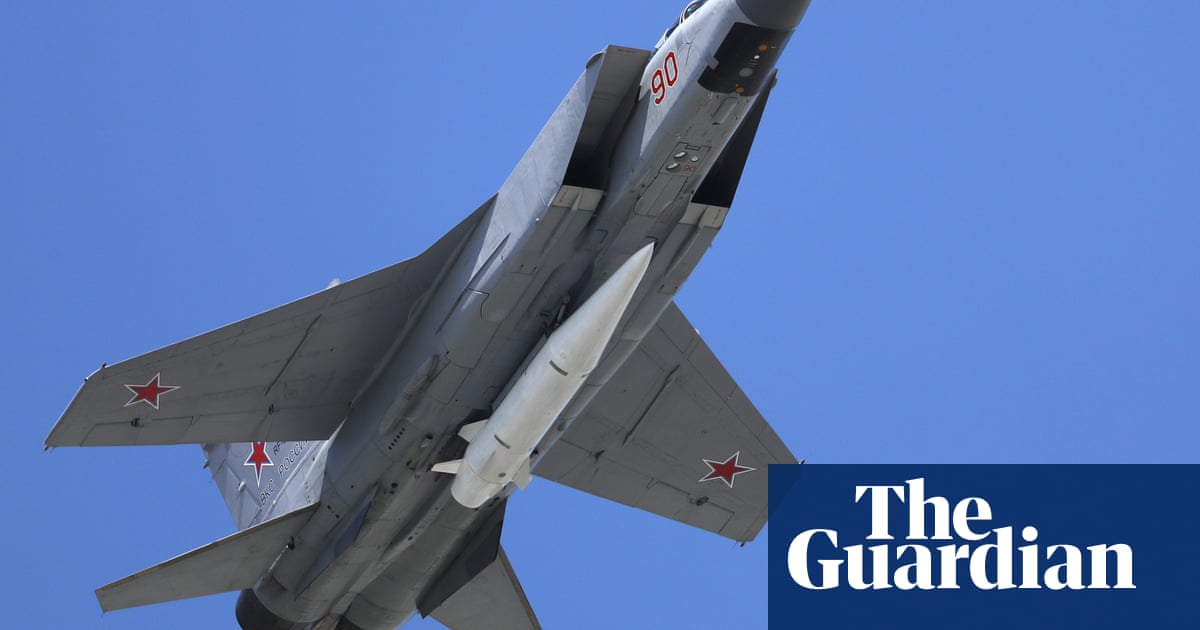Ukrainian special forces claim to have damaged two fighter jets in a night-time raid on an airfield deep insideRussiaas Kyiv sought to disrupt Vladimir Putin’s steady advances on the frontline.
A week after the spectacle of Operation Spiderweb, when drones struck the Kremlin’s nuclear-capable bombers, the general staff of the Ukrainian army claimed a fresh success.
Special operations forces were said to have launched an assault on the Savasleyka airfield, located in the Nizhny Novgorod region of Russia, about 400 miles from the Ukrainian border.
The army did not provide any details about the nature of the operation and questions remain about the extent of the damaged inflicted.
The airfield is used by Russia to deploy MiG-31K fighters carrying Kinzhal ballistic missiles which have been used against Ukrainian armed forces and its cities.
“According to preliminary information, two units of enemy aircraft were hit (probably MiG-31 and Su-30/34 aircraft)“, the general staff said in a statement. “The results of the combat operation are being clarified.”
Video footage also emerged of a successful drone strike on a factory in Cheboksary, about 800 miles from the Ukrainian border, which makes components crucial to the targeting mechanisms in self-propelled howitzers, Iskander missile systems and Lancet and Shahed kamikaze drones.
Ukraine’s armed forces said the attack on the VNIIR-Progress plant, which is under US sanctions, had led the authorities in Russia to halt commercial flights in the region.
They said: “At present, the destruction of the facility by at least two UAVs [unmanned aerial vehicles, or drones] and the subsequent large-scale fire have been confirmed. The results of the destruction are being clarified.”
Oleg Nikolayev, the regional governor, said in a statement that production at the factory had been suspended but that the strikes had not caused any casualties.
The operations inside Russia came as the Kremlin stepped up its night-time missile and drone strikes and made progress in pushing back the frontline in the north-east Sumy region and in Donetsk in the east.
On Sunday night and in the early hours of Monday morning, Russia launched 479 drones at Ukraine in the war’s biggest overnight drone bombardment, the Ukrainian air force said.
About 20 missiles were also fired into Ukraine, targeting mainly central and western regions. The operational command of the Polish armed forces said it scrambled fighter jets in response to the aerial attacks in western Ukraine.
The Rivne region, in western Ukraine, sustained the largest attack since the full-scale war began. One person had been confirmed dead, according to the chief of the regional military administration, OleksandrKoval.
Video footage shared on social media suggested that the Dubno airbase may have been struck. It has been claimed that this is the home of Ukraine’s F-16 fighter jets although this could not be independently verified.
Explosions were also heard in Kyiv, where Tymur Tkachenko, head of the Kyiv city military administration, reported that an office building in the capital’s Darnytsia district had been damaged.
The Ukrainian authorities claimed that their air defences destroyed 277 drones and 19 missiles in mid-flight, with only 10 drones or missiles successfully striking their targets.
In recent weeks, Russian forces have made significant advances in the Sumy region, pushing within 18 miles of the eponymous regional capital, three years after Ukraine’s counteroffensive pushed the Kremlin’s forces out of the area.
The region’s governor, Oleh Hryhorov, said that there was no need yet to evacuate Sumy city describing the situation as “tense but under control of the defence forces”.
Ukraine has denied Moscow’s claims that Russian forces have pushed through the western border of Donetsk into the eastern Dnipropetrovsk region for the first time in the three years of the full-scale war.
Maj Andrii Kovalev, a spokesperson for Ukraine’s general staff, said: “The information is not true. Fighting is ongoing in Donetsk oblast. The enemy did not enter Dnipropetrovsk oblast.”
